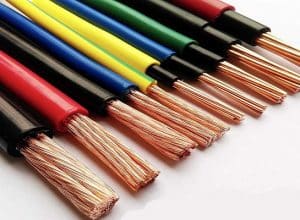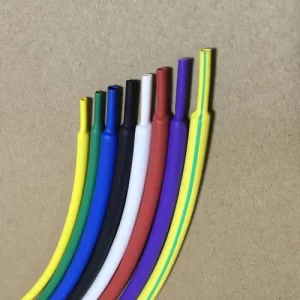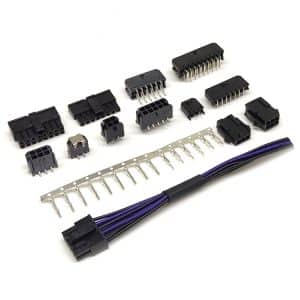In order to ensure the use effect and life of the wire harness, you need to know these 18 precautions during the production process.
1. Wire cutting:
Check whether the specifications and models of the wires are correct; whether the size meets the requirements; must flush the incisions, do not scratch the wire, and the wires are not dirty.

2. Peeling the outer skin:
Check whether the peeling opening is flush, and cannot peel off the core wire, braided wire, etc. , and whether the peeling size is correct.
3. Grouping processing:
Whether the trimming size is correct, the trimming is flush, and should not damage the core wire when trimming and grouping.
4. Peeling the inner skin:
Check whether the peeling opening is flush; the peeling size is correct; strip the core wire or broke the copper wire; the insulator cannot fall off during half-stripping.
5. Sleeve shrink tube:
Check whether the size and model of the shrink tube are correct.
6. Soldering preparation:
Check whether the temperature of the tin furnace is correct; the copper wire of the core wire is arranged well before preparing the soldering, there are forks, bends, discounts, etc.; Insufficient and scalded insulation skin and other phenomena.
7. Soldering:
Check whether the temperature of the soldering iron is correct; do not scald the insulating skin, the tin point should be smooth and free of tin tips, and not allow false soldering.
8. Terminal crimping:
Confirm whether the specifications of the terminals and wires are correct; the terminal crimping has flare, inclination, and the exposed insulation and core wires are too long or too short. This determines whether your wire harness will work properly.
9. Terminal insertion:
Check whether the connector and terminal type are correct; the terminal is damaged or deformed; wrongly insert the terminal, missing, or not inserted properly.
10. Cable crimping:
Check whether the type of the connector is correct; the direction of the cable is correct; damage the core wire, exposed copper, or scalded; whether the crimping is in place.
11. Blow shrink tube:
Whether the shrink tube shrinks well or not, and should not scald the insulating skin.
12. Assemble the shell:
Whether install the wrong shell, there are scratches, burrs, etc., there are missing parts, the screws are screwed, oxidized, discolored, loose, etc., and there is no bad match after assembly; if the shell is oriented Yes, then be sure to assemble as required.
13. Labeling:
Check whether the content of the label is correct, clear, and without hyphenation; the size of the label is correct; the label is dirty or damaged; the position of the label is correct.
14. Tie the cable ties:
Check whether the specifications, colors and positions of the cable ties are correct; there is no breakage or looseness.
15. Injection molding:
Check whether there is dirt on the mold, and whether there is a lack of material, air bubbles, poor adhesion, and poor hardening in the molding part.
16 Plug molding:
Check whether the plug molding is damaged, uneven, lack of material, burrs, sundries, flow lines and other defects, and confirm that the metal terminals are not deformed, damaged, exposed copper and other defects. Wire harness manufacturers use professional equipment to inspect terminals that are indistinguishable to the human eye to ensure that can properly energize the wire harness.
17. Electrical inspection:
Check according to the requirements of the corresponding product inspection guide ticket.
18. Visual inspection:
Note that all items should inspect that can be seen.
For example: check whether the product size meets the requirements; use the wrong material, use it more or less; check whether there are scratches, stains, burrs, deformation, gaps, etc. on the surface of the wires and connectors; the connector fixing parts are missing or not.
Whether the shell assembly is in good condition; the content of the label is correct and clear; the position and direction of the label are correct; the terminal crimping state is good, there is missing insertion, wrong insertion, and the insertion is in place. Whether the cable crimping condition is good; heat shrinkage.Whether the tube shrinks well, the shrinkage position and size are correct; the specification, quantity, and position of the cable tie are correct, and there is any loss.

